
Flexibility is the key to the new working landscape
Flexibility is the key to the new working landscape
Share
Herman Miller’s Kirsten Brown on why businesses need to focus on flexibility and agility in the new normal.
Workplace design for COVID and beyond will need to accommodate changes to the set-up of the office space and the people who utilise it.
With restrictions easing all over Australia, organisations are now looking at the safest possible ways to facilitate a return to the workplace. While acknowledging that the landscape has fundamentally changed and many people may continue to work from home where possible, others are returning to working environments. As this happens there are continually updated government guidelines in place to consider when reopening workplaces and, particularly, office spaces.
The first overarching thing to bear in mind is the principle spelled out on the Safe Work Australia website – “All workers, regardless of their occupation or how they are engaged, have the right to a healthy and safe working environment.”
Of course, this has always been the case, but in the wake of a global pandemic, that descriptor ‘healthy’ has taken on much greater resonance.
Best practice
Depending on where the workplace is geographically and the relevant legal requirements in place, the now familiar recommendations and rules must be followed – regular hand washing and sanitising, mask wearing, physical distancing and staying away from work and getting tested if you have any COVID-19 symptoms.
It is also recommended that you:
- put up posters around the workplace on keeping at least 1.5 metres distance between everyone at the workplace
- erect signs at the entrances to lifts and meeting rooms to ensure the maximum safe capacity is not exceeded
- instruct workers to have meetings by phone or online instead of in person as far as possible, and
- move workstations, desks and tables in staff rooms further apart to comply with social distancing.
The latter can be a challenge to organisations with limited space, but there are several ways to approach this.
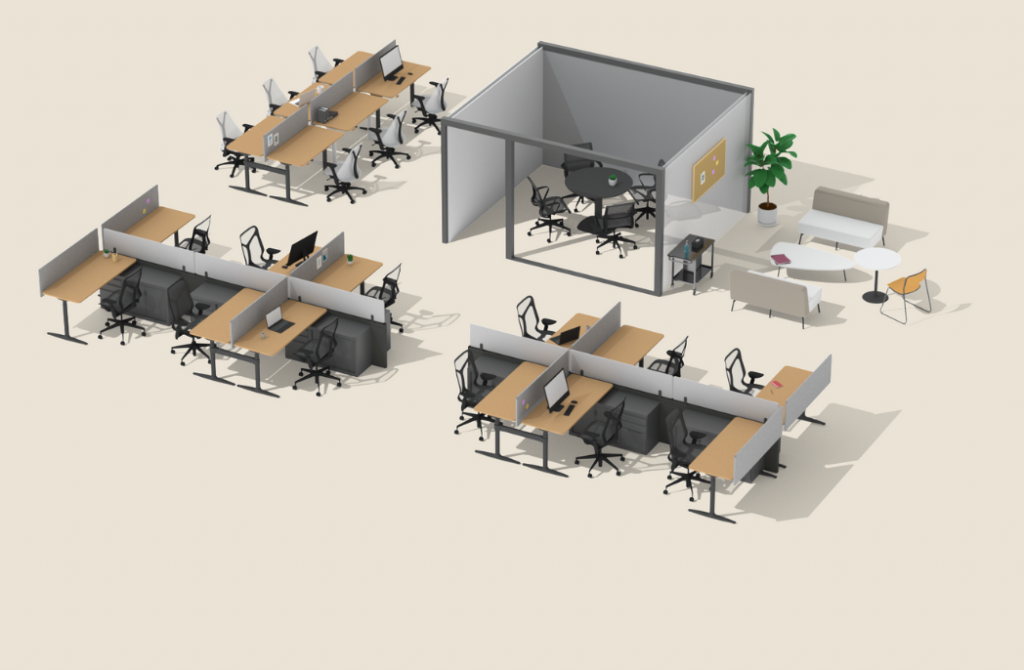
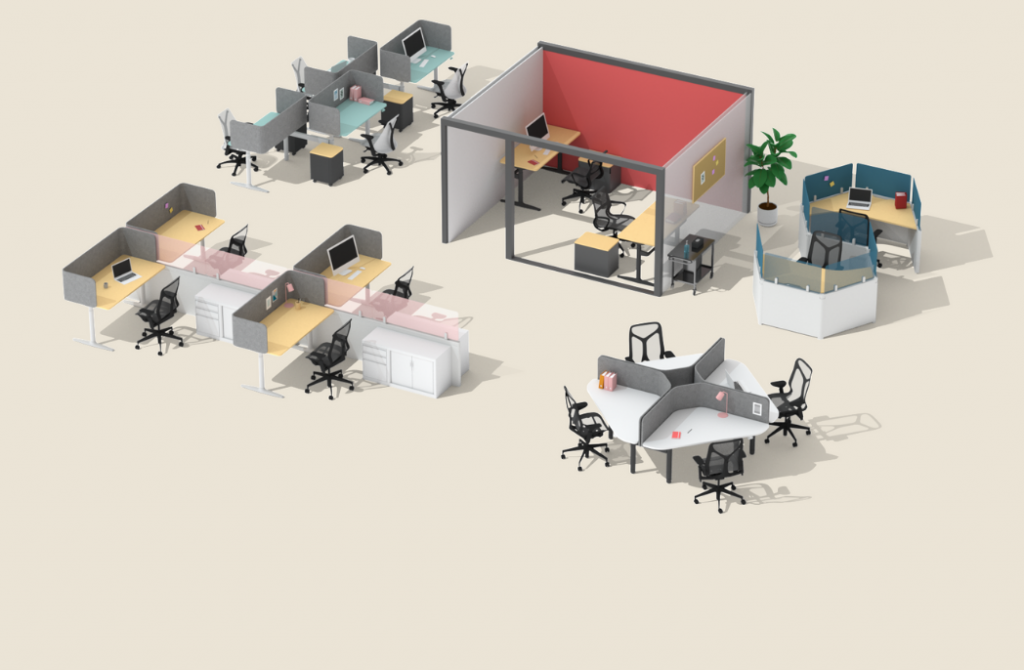
The Conventional Office (above) sees five staggered desks replacing hot desks, six workstations becoming four with physical barriers, a meeting space repurposed as additional workstations, a breakout area replaced by further workstations with acoustic barriers and a six-desk set-up transformed to a four-workstation arrangement.
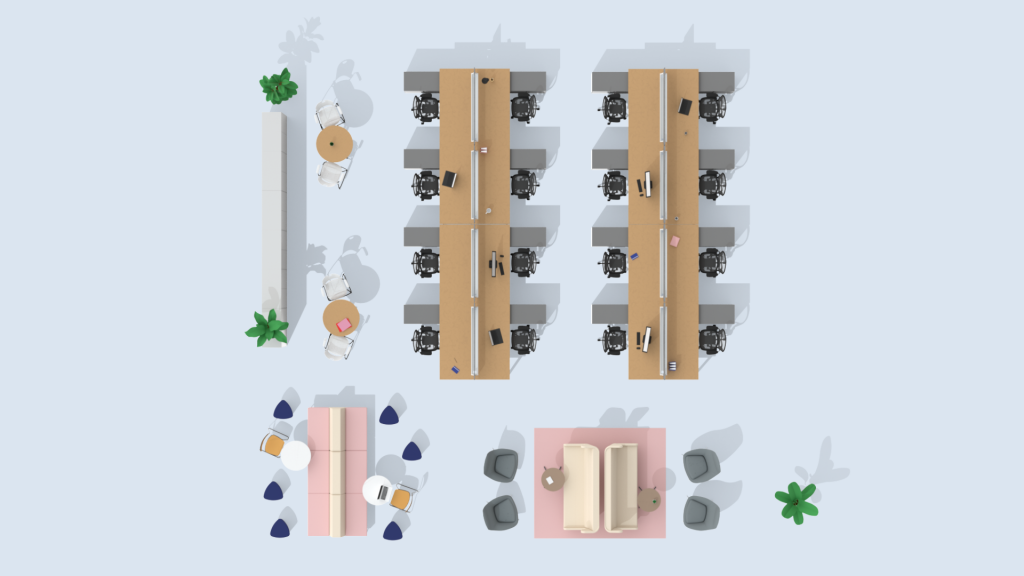
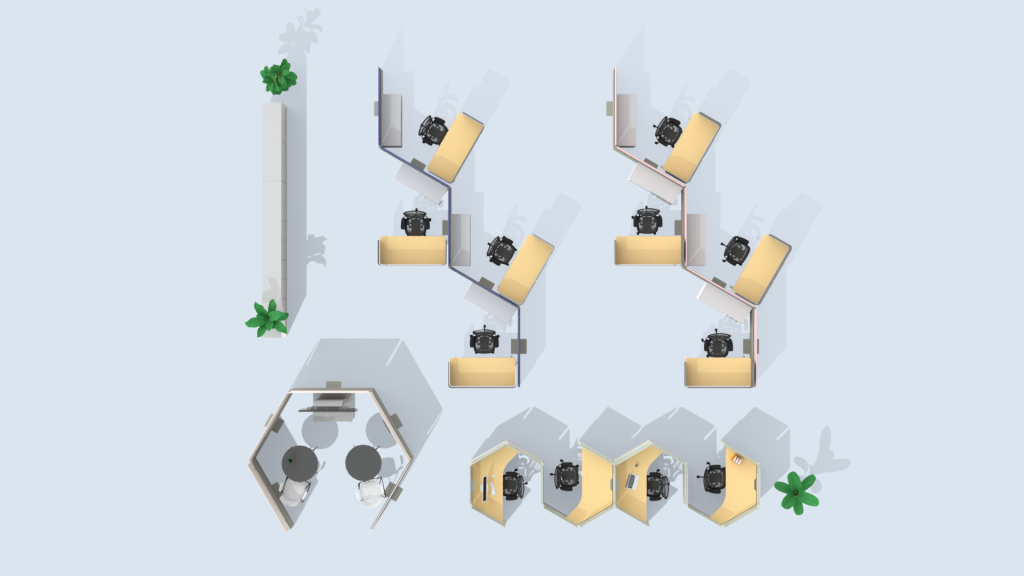
The Open Plan Office (above) utilises Atlas to promote physical distancing and Catena as a divider. The latter also creates an enclosed space to encourage video conferencing and acoustic privacy for promoting online meetings, rather than physical ones.
Reconfiguring the space
First, consider how to change the layout of the furniture you already have. The open plan office space that has long been the preferred choice for many organisations will need to be reappraised. The video below has recommendations for optimal workplace layout, utilising such patterns as staggered settings, honeycombs, back to back or workstations facing in the same direction rather than each other.
If the existing furniture is not appropriate or cannot be easily reconfigured, there are two options. It may be time to acquire new fixtures and fittings, but when doing so ensure that what you are buying has longevity built-in. Well-designed and better quality furniture will have the potential for disassembly embedded. From a sustainability viewpoint, this means furniture that can be taken apart and reconfigured or reused in different ways and circumstances. The Catena and Atlas Office Landscapes have both been designed with easy configurability in mind, while a solution like the Prospect Solo Space offers optimal peace of mind for single-person working set-ups.
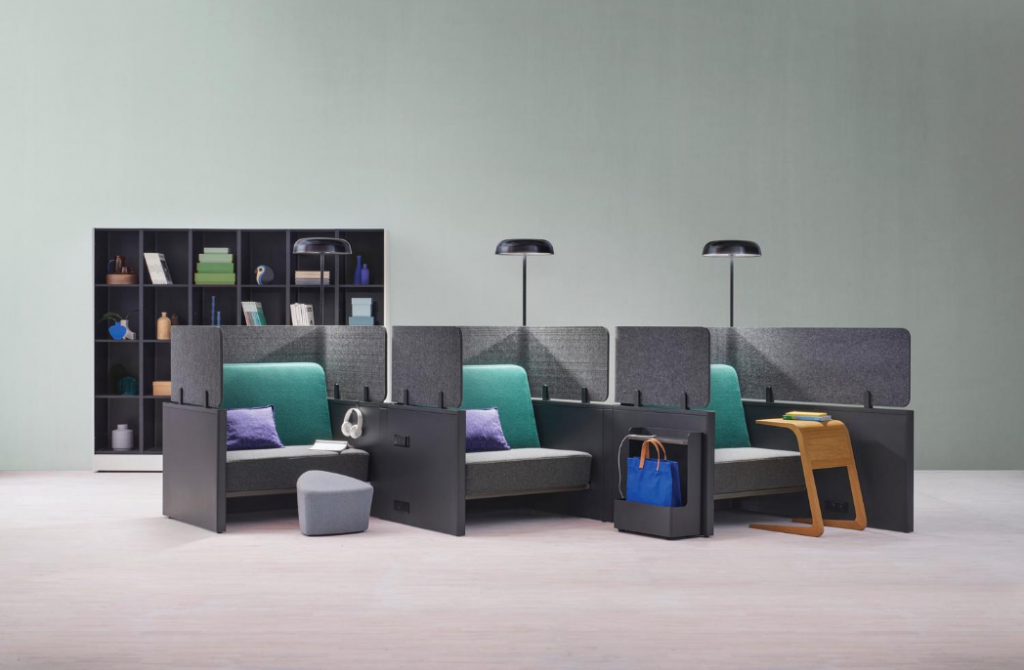
However, one of the biggest outtakes of COVID-19 has been the ensuing uncertainty, not just regarding when and how organisations will be able to return to their usual workspaces, but also what the business environment will be like when they get there – both in the medium and long term. Perhaps this is not the best time for significant expenditure? In which case, many organisations may be looking at moving to an A and B team scenario. It is already unlikely that all staff will be keen to return back to the office space full-time straightway, and splitting them into two or three groups, who access the space at different times, will solve both this desire and also the question of a safer workplace configuration.
Having few people in the workspace at any one time will result in lower density and is probably the most cost-effective way to deal with the new requirements.
Material world
Government guidelines also cover sanitation and cleaning recommendations and organisations will be implementing strict practices to comply with these. But consideration of health and safety from a legal point of view doesn’t always encompass the human side of the equation. There has been emphasis on providing plastic screens throughout workspaces and using vinyl and plastic fittings and furniture, as they are easiest to clean. But, human nature being what it is, this sort of environment will not be particularly humane or comfortable.
Instead of this approach, consider innovative textiles that have bacteria resilient coatings and investigate cleaning chemicals that are suitable for a range of fabrics and materials.
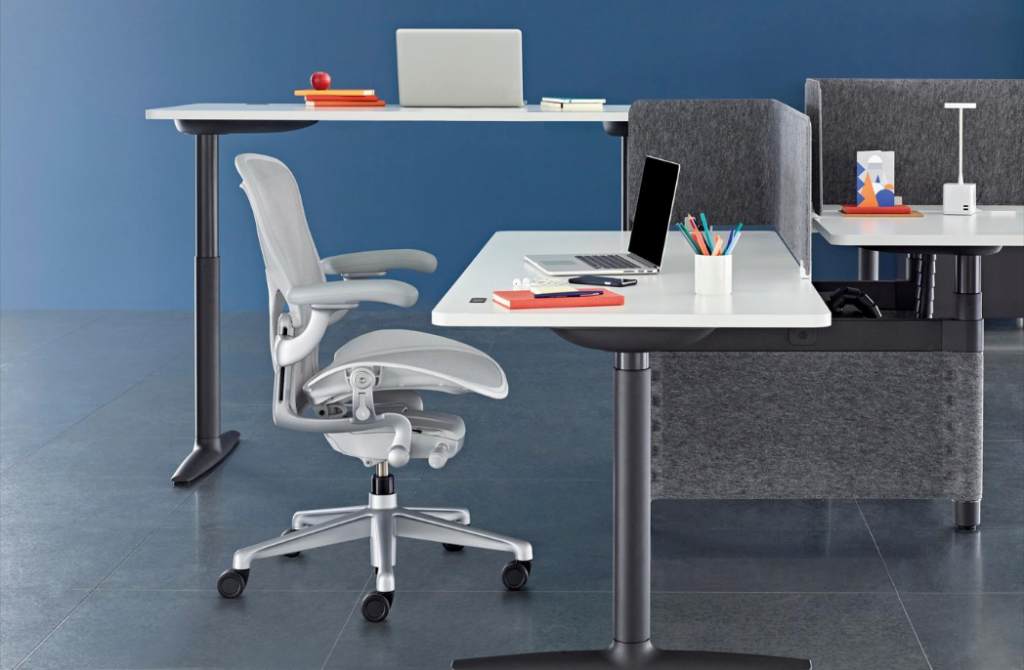
Beyond COVID
Remember that companies will need to adapt their restrictions and practices to design as the healthy bias changes. While the conversation may be all about COVID right now, it’s not certain what the next challenge may be.
Another pandemic could be on the cards, but there are also the issues that workplaces were facing before 2020 – ergonomic challenges and, particularly, the increasing awareness of the dangers of a sedentary lifestyle.
Organisations like Fitwel (www.fitwel.org) and the Well Building Institute (www.wellcertified.com) have identified various areas in the workplace that can have a negative impact on employee health and well-being. The former has indicated accessible stairs as a primary point of vertical movement. It has generated clear guidelines as to how big stairs should be and how they should look so that people will actually use them.
Many buildings only have fire stairs that prevent people from accessing higher floors as the doors cannot be opened from the stairwell. Being forced to use the lift has never been good for their physical fitness, but COVID-19 has made it increasingly unadvisable to join other people in a small, confined space.
Fitwell research has found that if accessible stairs are designed in the recommended fashion, they are twice as likely to be used.
In efforts to decrease overly sedentary working patterns, sit/stand desks and other ergonomic approaches are recommended, with activity-based working particularly helpful in keeping employees moving around throughout the day.
The most important element to remember here, though, is that providing the fixtures and fittings to facilitate health and safety in the workplace is worth little unless you also provide the training and promotion to support it.
When users fully understand the capabilities and reasoning behind such furniture, they are much more likely to utilise it.
Final word
The key to a post-COVID working landscape is flexibility. This is twofold – first it refers to the physical floor space and utilising products that are future-proofed and flexible. Second, and of equal importance, is the flexibility of work hours and location. Now that it has been proven that such working patterns can work on a long-term basis there could be significant strides forward in terms of individual health and well-being. As workers are able to access flexible working arrangements in the post-pandemic world, this will make family management easier for both women and men. It could even mean something of a silver lining to what has been a time of great upheaval and significant challenge for all.
For more information visit Herman Miller.
You Might also Like

















